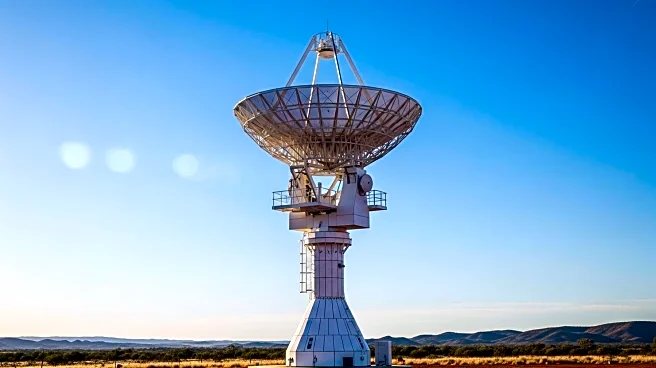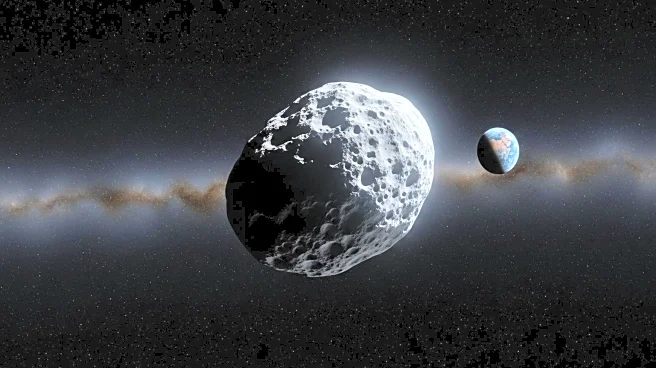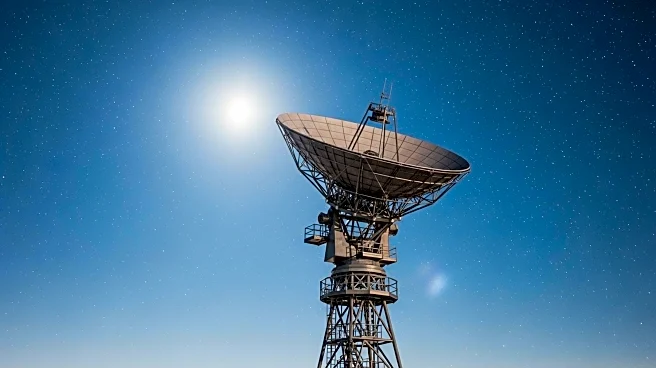What's Happening?
Asteroid 2025 TF, measuring between 1 to 3 meters in diameter, made a close approach to Earth, passing over Antarctica on October 1, 2025. The asteroid came within 428 kilometers of Earth's surface, a distance comparable to the orbit of the International Space Station. Detected by the Catalina Sky Survey only hours after its closest approach, the asteroid was subsequently observed by astronomers from the European Space Agency's Planetary Defence Office using the Las Cumbres Observatory telescope in Australia. Despite its proximity, the asteroid posed no real threat due to its small size, which typically results in harmless atmospheric entry and potential fireball displays.
Why It's Important?
The close approach of Asteroid 2025 TF underscores the importance of global planetary defense initiatives. While small asteroids like 2025 TF are considered harmless, larger asteroids can pose significant risks, as evidenced by the 2013 Chelyabinsk event in Russia. This incident released energy equivalent to hundreds of kilotons of TNT, causing damage and injuries. International efforts, including those by ESA and NASA, focus on monitoring and cataloging near-Earth objects to predict potential impacts. The successful tracking of 2025 TF demonstrates advancements in detection systems and prediction models, enhancing preparedness for future encounters.
What's Next?
Continued efforts in planetary defense are expected to improve the precision of asteroid tracking and prediction models. Observatories worldwide will maintain vigilance, scanning for near-Earth objects to refine detection capabilities. The data collected from close encounters like that of 2025 TF will contribute to the development of more robust planetary defense strategies, ensuring early identification of potential hazards. As technology advances, the global scientific community remains committed to responding effectively to threats from space.
Beyond the Headlines
The event highlights the dynamic nature of Earth's solar neighborhood and the ongoing need for vigilance in planetary defense. It serves as a reminder of Earth's vulnerability to space objects and the critical role of international collaboration in safeguarding the planet. The successful tracking of such a small asteroid shortly after its discovery showcases the progress made in astronomy and planetary defense, emphasizing the importance of continued investment in these areas.










